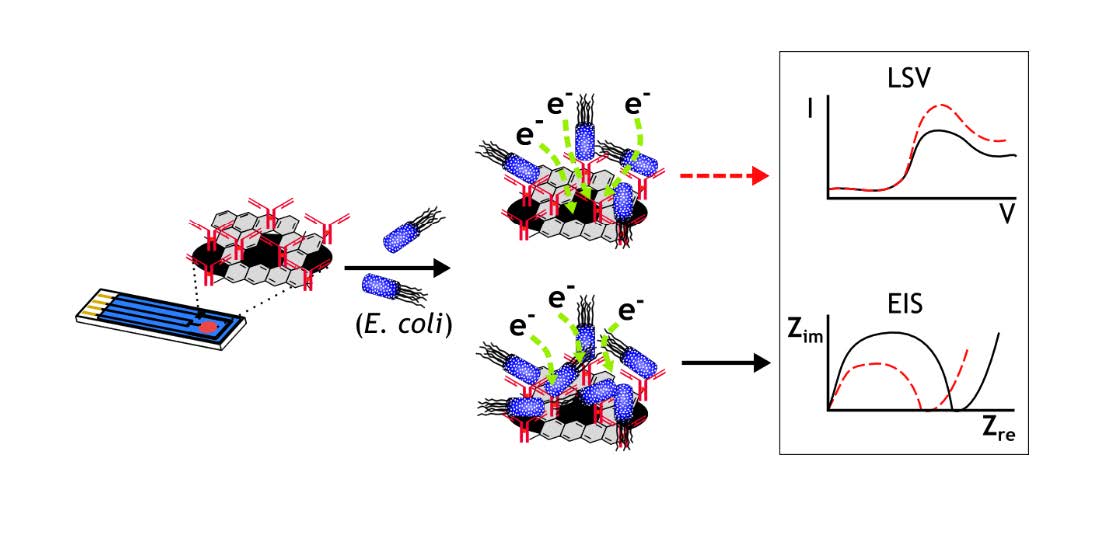Immunosensors have been widely developed to use antibodies to detect a pathogen of interest; it is interesting to look at the effect of nonspecific antibody binding to E. coli using electrochemical methods. IgG antibody not specific to E. coli O157:H7 was crosslinked onto a screen-printed carbon electrode. The presence of E. coli at 4, 4 × 102, 4 × 105, and 4 × 108 CFU/mL on the electrode surface was detected via linear sweep voltammetry (LSV) and electrochemical impedance spectroscopy (EIS). Current transfer at both electrodes was reduced as the concentration of bacteria increased; however, the calibration of number of cells to decreased current was nonlinear for IgG-modified electrodes. The nonlinearity is confirmed by EIS measurements which showed highest impedance at 4 CFU/mL E. coli when impedance should be the lowest. FESEM images showed higher binding of cells when IgG is present compared to electrodes with reduced graphene oxide (rGO) alone. Electrodes with rGO alone show less attachment of E. coli, with EIS showing a linear calibration profile, while LSV shows not much difference in current values for all concentrations aside from the highest concentration. These results suggest that nonspecific binding can provide false signals in electrochemical measurements, and it is crucial to provide proper controls.

